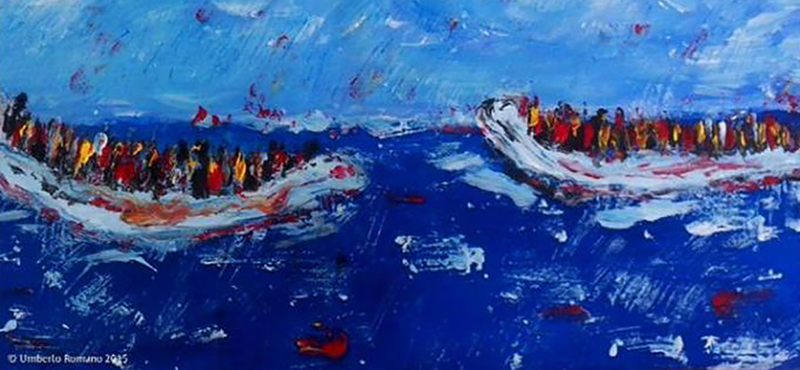EPIIC 2018-19 Overview

The 2018-19 Sherman Teichman EPIIC Colloquium
MIGRATION IN A TURBULENT WORLD
EXP 0079 XF • Tuesdays and Thursdays, 3:00-5:00pm
Dr. Abi Williams
Director, Institute for Global Leadership
All interested students must come to the first class on Tuesday,
September 4, 3:00pm, Lane 100
EPIIC is a yearlong course worth three credit hours per semester. For International Relations majors, "Migration in a Turbulent World" has been approved as a social science requirement for students in the Globalization concentration for the Fall 2018 semester.For Peace and Justice Studies Minor, EPIIC can be taken for credit for the introductory course.
EPIIC is a yearlong course worth three credit hours per semester. Social science requirement for students in the Globalization concentration IR credit for EPIIC for the Fall 2018 Peace and Justice Studies Minor Credit
The 2018-2019 EPIIC Colloquium will critically examine the multidimensional aspects of migration. Migration has become a worldwide phenomenon and its importance today is clear. Concerns with the demographic, economic, social, security, legal and political consequences of international migration have also increased. Discussions on issues such as national security, xenophobia, racial discrimination, social integration, unemployment, brain-drain and brain-gain, human trafficking, and asylum claims have led to a reexamination of international migration policies and the potential benefits and disadvantages to sending and receiving countries.
Some states are questioning whether migration can bring benefits and opportunities to all parties – migrants, states of origin, states of transit and receiving states. With the attention now paid to counter-terrorism and violent extremism, cooperative efforts to address national security concerns posed by the movement of people has become a pressing issue for both receiving countries and countries of origin. And while migration has long been a sensitive matter of national sovereignty, it now encompasses regional and global dimensions.
Part I addresses theories of migration and reviews historical patterns of migration in both sending and receiving countries.
Part II examines the causes and drivers of forced migration.
Part III explores the impact of migration on countries of origin, countries of destination, and on migrants themselves.
Part IV considers state responses to migration, including the links with securitization and border controls.
Part V focuses on particular groups and identities within migrant populations that have historically been neglected such as gender and children.
Part VI explores the nature and dynamics of migration in different regions.
Part VII considers the need for international cooperation on the question of migration. Migration is ultimately both a “problem without a passport” and a “solution without a passport.”
